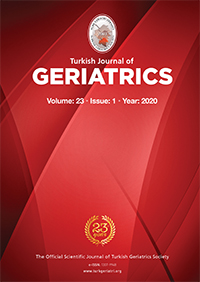Materials and Method: Subjects were randomly selected from patients aged ?65 years whose forensic evaluation was performed at the department of forensic medicine. The sample size was determined with Epi-Info version 7 software. SPSS Windows 20.0 software was used to analyze the data.
Results: Of the patients, 68.9% were male and 31.1% were female, with a mean age of 72.8 ± 6.11 years. Among them, 53.8% and 46.2% were exposed to trauma due to non-accidental causes and an accident, respectively. Such accidental injuries most commonly occurred due to traffic accidents (78%) and falls (16.7%), whereas non-accidental injuries most commonly occurred due to intentional injuries (96.1%). Accidental and non-accidental injuries were most commonly seen in females and males, respectively. The injury severity score was higher for accidental injuries. Minor and major injuries were observed in 95.1% and 4.9% patients, respectively, according to the injury severity score. Of the major injuries, 42.9% were in the head and neck region.
Conclusion: According to our results, non-accidental traumas in the geriatric population are similar to those in other age groups, whereas injuries due to falls increase in the former with a decrease in physiological reserves. Trauma severity appears to be more severe in accidental injuries.
Keywords : Geriatrics; Forensic Sciences; Wounds and Injuries; Violence; Accidents, Traffic
